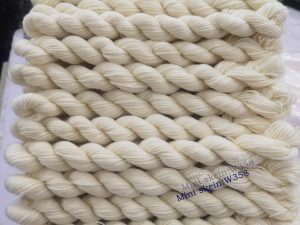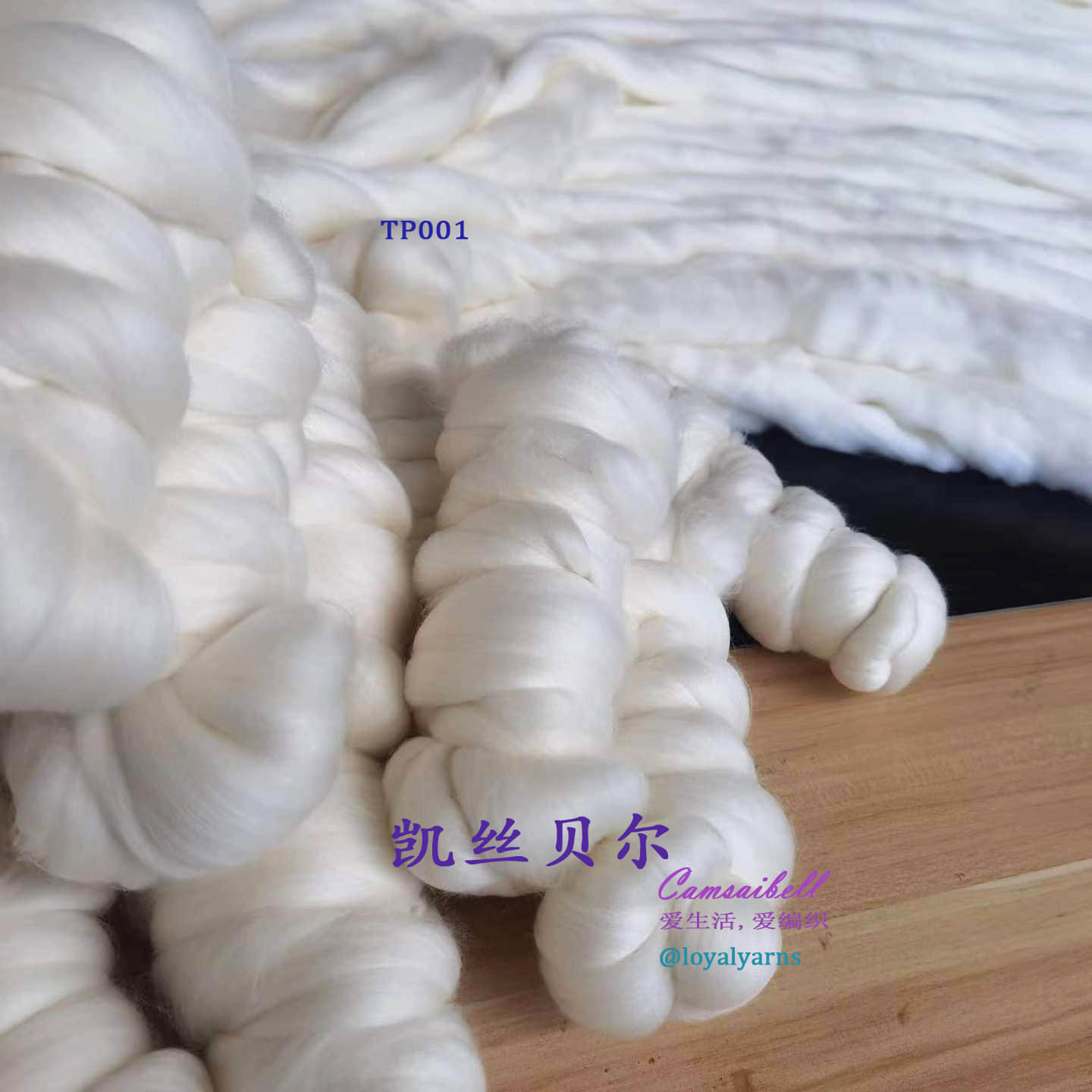Product brief:
The fingering yarn W423 is a high quality textile material made from a blend of 85% super-washed merino wool and 15% nylon. This yarn is famous for its excellent quality and excellent performance.
INGREDIENTS:
85% SUPER WASH MERINO WOOL: Merino wool is a premium type of wool that is soft, warm, and durable. It has been super washed to ensure its soft texture and doesn’t roll easily.
15% nylon: Nylon is a synthetic fiber with excellent strength and abrasion resistance, which can increase the durability and stability of the yarn.
Technical parameters:
- Yarn spool: 425m/100g
- Yarn density: high density yarn, suitable for making fine, fine fabrics.
- Softness: Soft and moderately elastic, providing a comfortable use experience for hand knitting.
- Durability: Thanks to the addition of nylon, this blended yarn has strong wear resistance and durability.
- Applicability: Suitable for manual knitting, weaving, crochet and other textile processes.
Suggestions for use:
A 2.5-3.5mm needle or hook size is recommended for best results.
Please read the textile washing instructions and follow the instructions before washing.
It is recommended to wash by hand or choose a gentle washing procedure, use mild detergent, and avoid strong rubbing.
Lay flat to dry, avoid exposure to the sun or use a hot air blower to dry.
Areas of application:
Hand knitting: Suitable for handicraft production such as knitting and crochet, it can be made into warm and comfortable items such as wool scarves, hats, gloves, etc.
Weaving: Can be used on looms to weave various fabrics, such as sweaters, blankets, bedding, etc.
Creative craftsmanship: Due to its rich color choices and excellent texture, this blended yarn is ideal for creative crafting.
Dyeing technology:
- Acid dyeing: This is a dyeing technique widely used in animal fibers such as wool and silk. In acidic conditions, acid dyes are used to transfer color onto the fibers. Acid dyes chemically react with cationic groups in fibers to form a stable bond.
- Basic dyeing: Basic dyeing is mainly used for synthetic fibers in textiles, such as nylon and polyester. It uses an alkaline dye that reacts with anionic groups in fibers under alkaline conditions. This dyeing method is suitable for dyeing dark or bright colors.
- Phthalamine dyeing: Phthalamine dyes are mainly used to dye cotton fibers. The dye combines with the hydroxyl groups in the fiber under alkaline conditions to form a stable stain.
- Reaction dyeing: Reaction dyeing is a special dyeing technique that uses dyes that chemically react with functional groups in fibers. Common reactive dyes include ketone dyes and meth dyes. This dyeing technique achieves long-lasting dyeing results on different types of fibers.
- Dyeing with water: Dyeing with water is a technique in which water washing and dye migration are used during the dyeing process. During the washing process, dye molecules diffuse from the dye solution into the fiber, causing the color on the fiber to change.
- Knot dyeing: This is a creative dyeing technique where the fibers are knotted or tied together so that the dye can only penetrate the dyed part, creating a unique pattern and texture.
- Digital printing dyeing: With the development of technology, digital printing dyeing technology has become an innovative dyeing method. With a digital printer and special dye ink, patterns and colors can be printed directly onto the fiber to achieve personalized and high-resolution dyeing results.
Environmental protection concept:
- SUSTAINABLE FIBER CHOICE: The fingering yarn W423 is made from a blend of ultra-washed merino wool and nylon. Super washed merino wool is a natural fiber, renewable and degradable, with a low environmental impact. At the same time, the selection of nylon blended parts should take into account the production process and environmental impact of nylon fibers to select materials that meet environmental standards.
- Saving resources: In the production process of fingering yarn W423, measures should be taken to conserve the use of resources. This includes controlling water consumption, optimizing energy consumption, and reducing waste water and exhaust emissions. Saving measures in the production process can reduce the burden on the environment and improve the efficiency of resource utilization.
- Environmentally friendly dyeing: In the dyeing process, environmentally friendly dyes and dyeing methods should be selected. Prioritize non-toxic, heavy metal-free dyes to reduce pollution to water bodies and the environment. At the same time, low-temperature, low-energy dyeing technology is used to reduce energy consumption and carbon emissions.
- Waste management: Appropriate waste management measures should be taken during the production of fingering yarn W423. Minimize waste generation, sort and recycle waste, and reduce negative impacts on the environment.
- Concept of sustainable consumption: The environmental concept of fingering yarn W423 also involves product use and consumption concepts. Encourage users to choose sustainable textiles, pay attention to product materials and manufacturing processes, promote the rational use, maintenance and reuse of textiles, extend the service life of products, and reduce waste and resource consumption.
Whether you are a professional weaver or a crafting enthusiast, we are confident that our fingering yarn W423 will open up endless possibilities for your creations. Thank you for your trust and support for our products! If you have any questions or need further information, don’t hesitate to contact our customer service team.











